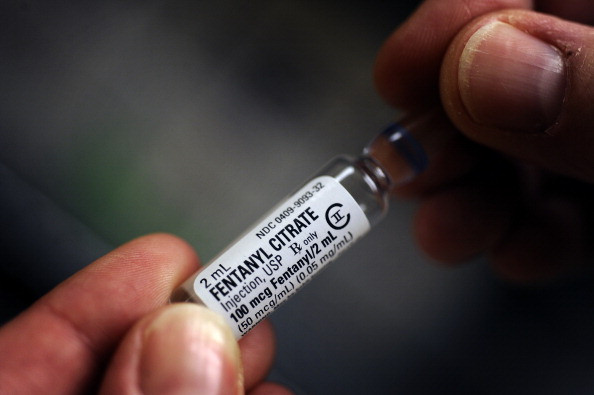What is fentanyl, the drug fuelling a US overdose epidemic?

The US is currently battling with a rise in fentanyl overdoses. The latest example is Northern California: in the Sacramento area alone, nine people have died in less than a week after they took the drug, thinking it was another medication. But what exactly is fentanyl and why can it be dangerous?
Fentanyl is a potent opioid painkiller which has been prescribed and used for more than 50 years to help patients deal with severe pain. Though it is similar to morphine, it is considered to be 10 to 100 times more potent. Today, it often comes in the form of a patch or a lozenge tablet.
Like any other opioid drug, it binds to opioid receptors in the brain and the spinal cord, driving dopamine levels up. This leads to the body experiencing a state of relaxation and euphoria. Secondary effects include drowsiness, respiratory depression and arrest, nausea, confusion, constipation, or sedation.
If doses aren't respected, people risk coma and death. In some cases, even when patients follow instructions from their doctors, they risk becoming dependent on the drug. That's why it is important not to abuse it, and not to take it too frequently.
An overdose victim should be given an opiate receptor antagonist, such as Naloxone, which works by inhibiting the effects of fentanyl and can sometimes save lives.
Street version of fentanyl
While it can provide real relief to some patients when it is prescribed by doctors, fentanyl can also cause serious damage, as it becomes a common product on the black market. Illicitly produced in clandestine labs, it is often mixed up with other hard drugs, such as heroin or cocaine, in powder form. Fentanyl amplifies the effects of such drugs, making them more dangerous.
However, it is also increasingly sold alone, as a potent street version of the prescription drug, in a highly dosed, potentially lethal form. And, like in Sacramento, people may also buy it thinking it is another medicine.
In some parts of the US, fentanyl now kills more people than heroin, the New York Times reports. According to the newspaper, a certain number of drug cartels have now found a way to produce fentanyl more cheaply than heroin, making it one of their star products.
Additional data regarding drug seizures across the country reveal the extent of the problem. The CDC reports that the total number of fentanyl drug seizures across the country has risen from 618 in 2012 to 945 in 2013, and to 4,585 in 2014.
© Copyright IBTimes 2025. All rights reserved.






















